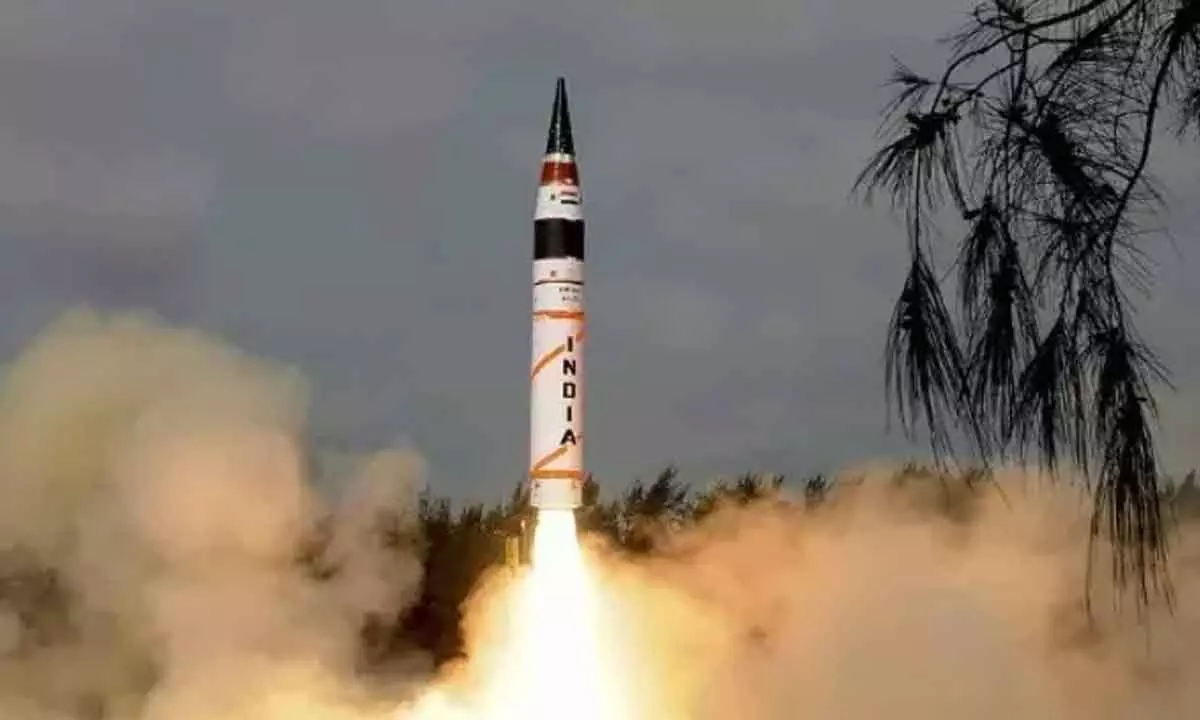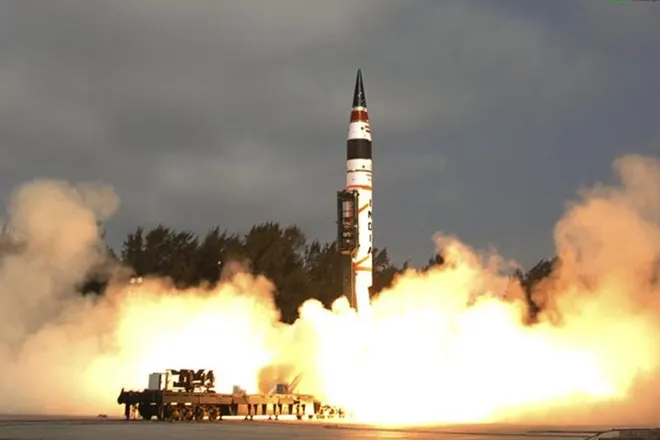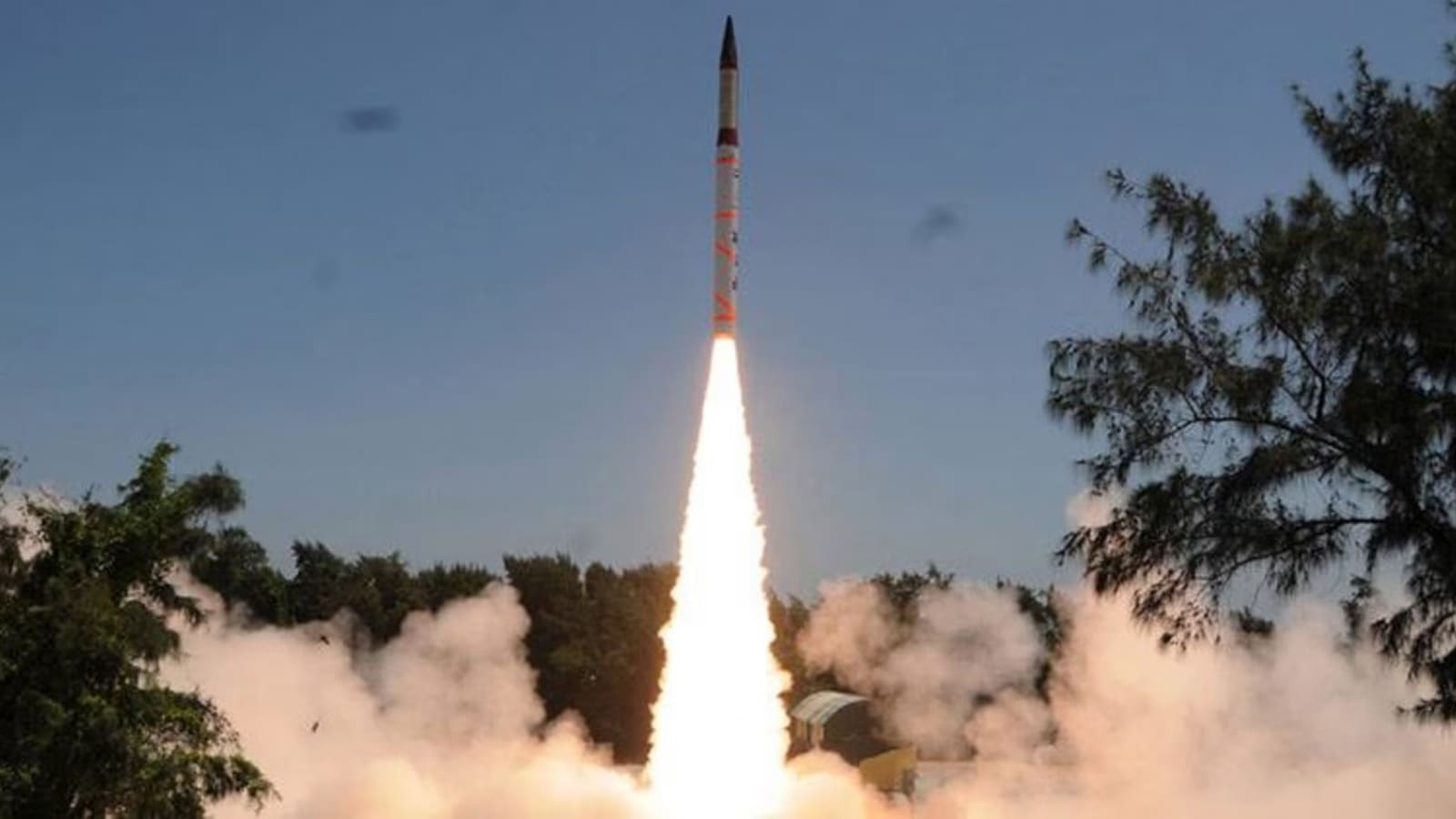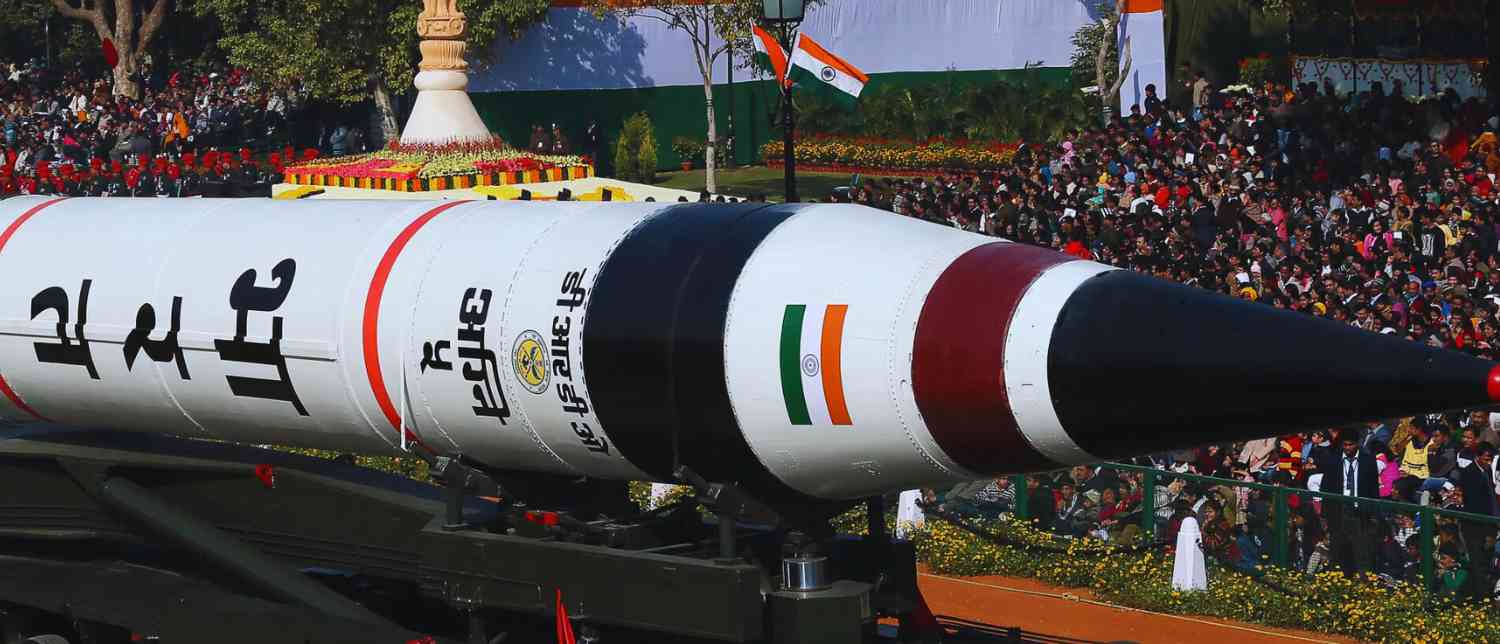India has successfully carried out the test of its long-range nuclear-capable ballistic missile, Agni-5, marking another big step in the country’s defence and security development. The test, conducted from the Dr. APJ Abdul Kalam Island off the Odisha coast, showed that India’s missile technology is becoming more advanced, reliable, and secure. Officials confirmed that all mission objectives were met during the trial.

Agni-5 is one of India’s most powerful missiles. It belongs to the "Agni" series of missiles developed by the Defence Research and Development Organisation (DRDO). What makes Agni-5 special is its intercontinental reach, with a range of more than 5,000 kilometers. This means it can travel long distances, giving India the ability to defend itself from even far-off threats.
Another important feature of this missile is the MIRV (Multiple Independently Targetable Re-entry Vehicle) technology, which allows a single missile to carry several warheads. Each warhead can hit a different target, making the missile extremely effective and tough to defend against.
While India has tested Agni-5 earlier as well, this latest test is crucial for a few reasons:
-
Reliability: Advanced tests prove the missile’s accuracy and readiness if ever needed for national security.
-
Deterrence: India follows a “No First Use” (NFU) nuclear policy, meaning it will never use such weapons unless attacked first. However, having strong defence technology like Agni-5 acts as a deterrent. It ensures that no country would think of threatening India easily.
-
Technological Achievement: Developing a missile of this scale puts India in a very small group of countries, like the USA, Russia, and China, who have similar capabilities.
Defence experts have said that the test shows India’s growing confidence in protecting its long-term interests. Some also point out that such developments are natural for a country of India’s size, especially because of its geographical situation and its role in global security.

On the other hand, peace activists remind that while strengthening defence is important, global efforts should also focus on reducing the risk of nuclear weapons. They argue that countries should invest equally in peace talks and technology that supports development, not just weapons.
-
National Security Analysts: They believe this sends a clear signal that India can defend itself strongly in case of threats.
-
Common Citizens: Many see the success as a proud moment, showing India’s growth in science and defence. However, some also express hope that such powerful technology will never have to be used in real conflict.
-
International Observers: Neighbouring countries and global powers are watching carefully. While official reactions are mostly quiet, analysts suggest that it may influence the balance of power in Asia.

The successful test of Agni-5 comes at a time when the world is facing rising uncertainties, from border tensions to global rivalries. For India, this achievement demonstrates progress in its scientific, technological, and security journey. At the same time, it opens up questions about how countries balance defence readiness with the need for peace and cooperation.
India’s latest missile test is a scientific milestone and a strong message of self-reliance in defence. It gives India more confidence on the world stage, but it also reminds us of the bigger challenge—how countries can stay safe while also keeping peace a priority.
With inputs from agencies
Image Source: Multiple agencies
© Copyright 2025. All Rights Reserved. Powered by Vygr Media.























